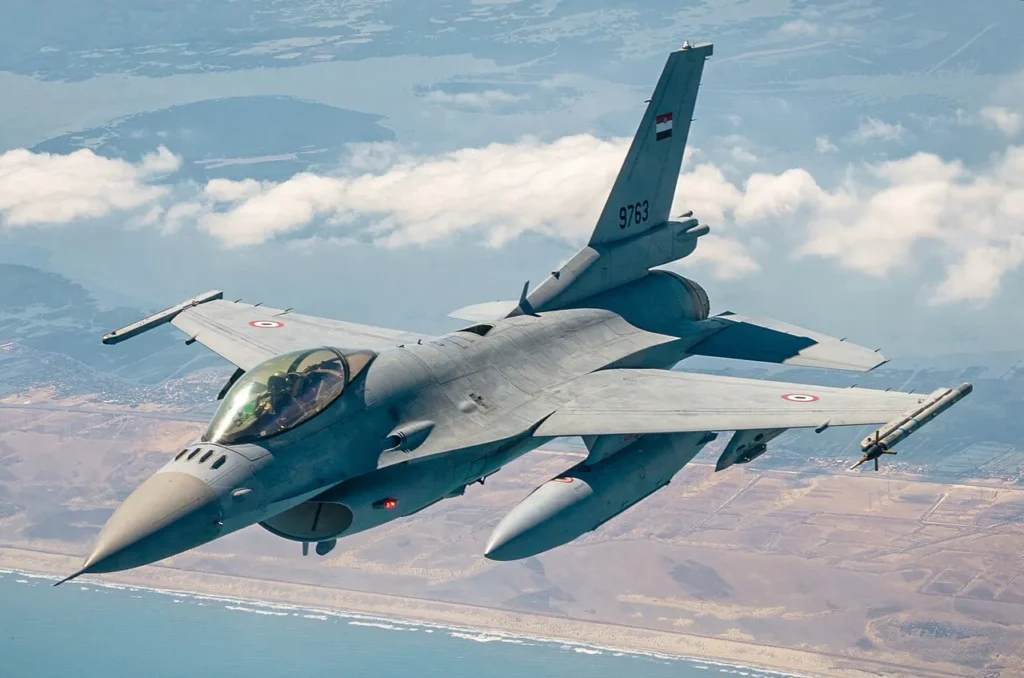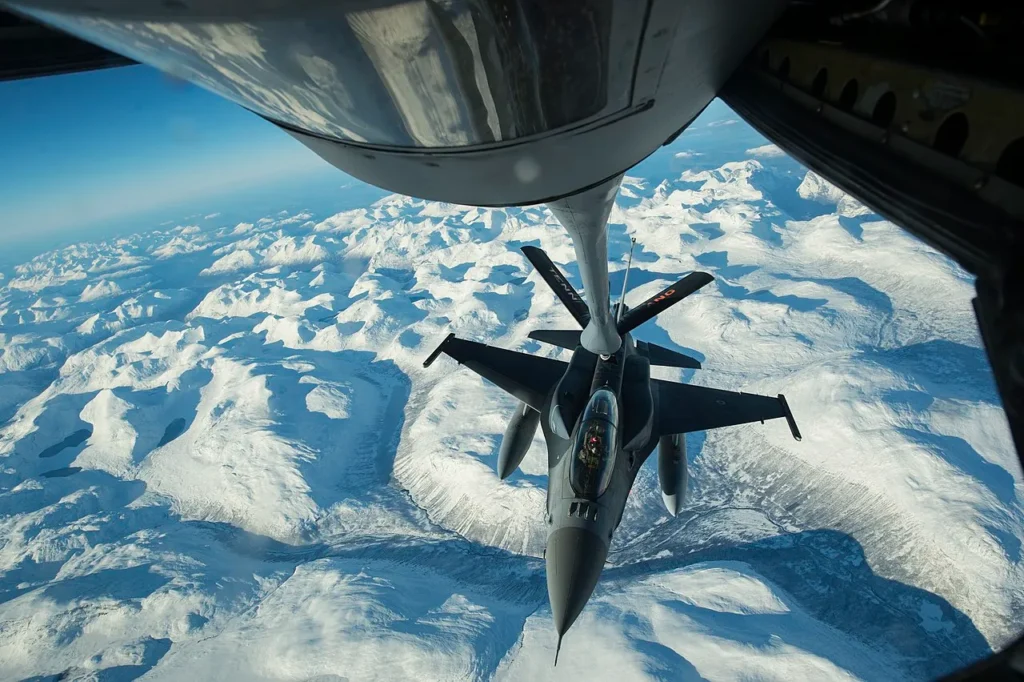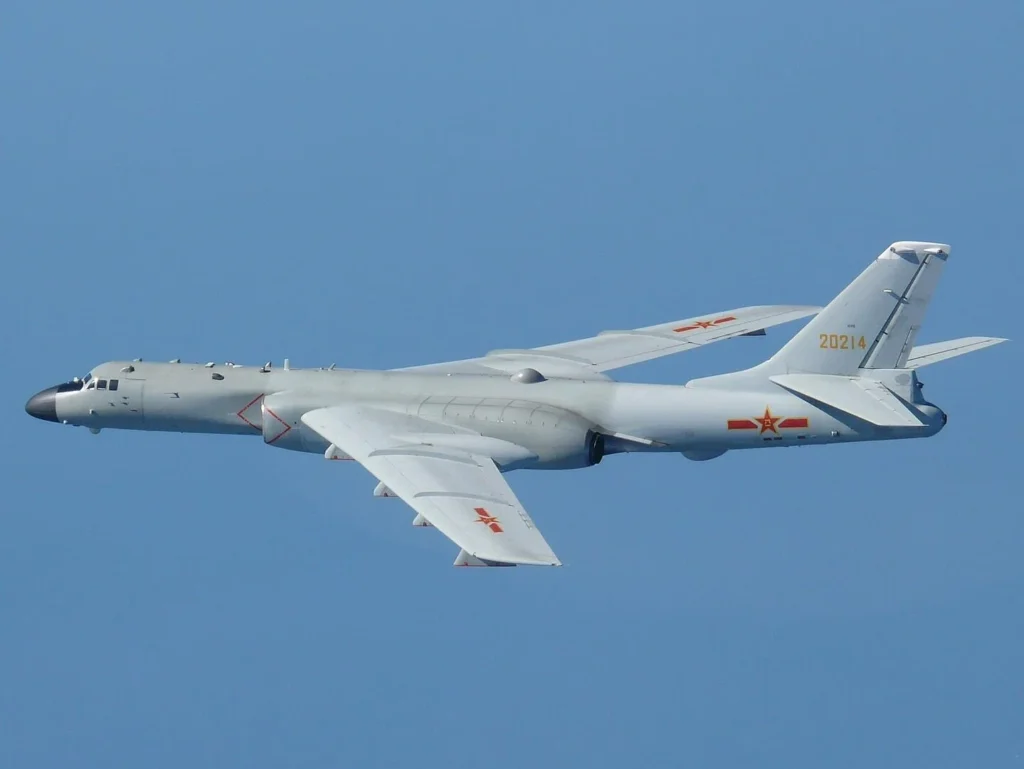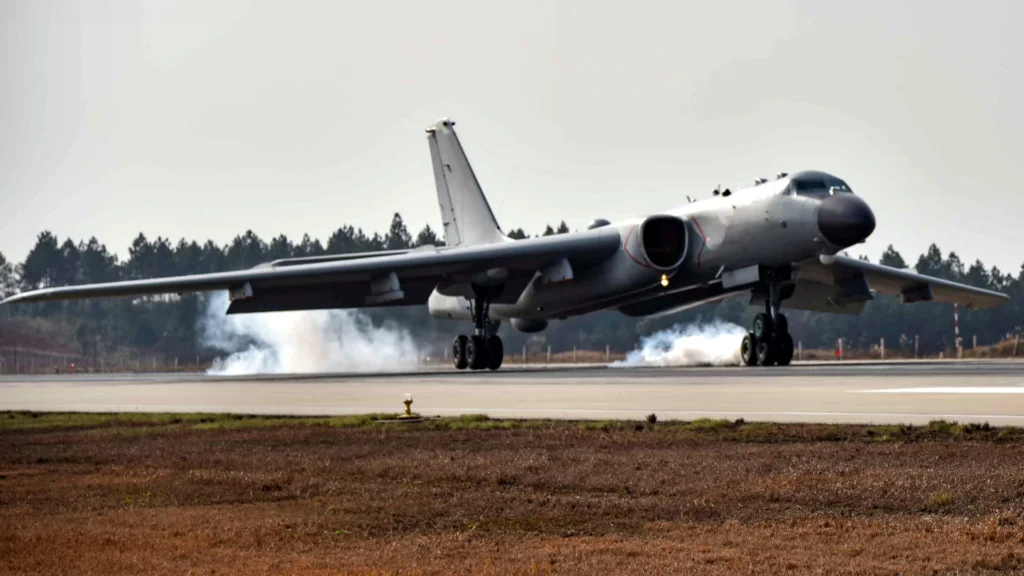
COLORADO— U.S. F-16 Fighting Falcons intercepted Russian IL-20 surveillance aircraft flying near Anchorage, Alaska, on two consecutive days this week, according to the North American Aerospace Defense Command (NORAD).
On Wednesday and Thursday (August 20 and 21, respectively), the Russian reconnaissance planes entered the Alaskan Air Defense Identification Zone (ADIZ), prompting NORAD to scramble fighter jets and supporting aircraft from Joint Base Elmendorf-Richardson (JBER/ANC) to identify and monitor the flights.
The Russian aircraft remained in international airspace and did not enter U.S. or Canadian sovereign airspace.
 An Egyptian F-16 Fighting Falcon; Photo- Wikipedia
An Egyptian F-16 Fighting Falcon; Photo- WikipediaUS F-16 Intercepts Russian Spy Planes
The first incident occurred on Wednesday when NORAD launched two F-16 Fighting Falcons alongside a KC-135 Stratotanker to provide in-flight refueling. The intercept ensured continuous monitoring of the Russian IL-20 as it approached the Alaskan ADIZ.
On Thursday, NORAD again responded with two F-16s and a KC-135, adding an E-3 Sentry AWACS for broader radar coverage and command control. The same type of Russian IL-20 reconnaissance aircraft was intercepted.
Despite back-to-back encounters, NORAD confirmed the Russian aircraft adhered to international flight paths and posed no immediate threat to North American sovereignty.
Understanding the Alaskan ADIZ
The Alaskan Air Defense Identification Zone (ADIZ) is a designated area of international airspace beyond U.S. and Canadian borders where all entering aircraft must identify themselves for national security purposes.
Such zones extend beyond sovereign airspace, giving defense forces time to track and evaluate foreign military or civilian aircraft approaching national territory.
NORAD officials emphasized that Russian activity in the ADIZ occurs regularly and is not unusual. Aircraft from Russia entered the Alaskan ADIZ as recently as July 22, with earlier incidents recorded in February and April of this year.
 A Turkish F-16 Fighting Falcon refueling; Photo- Wikipedia
A Turkish F-16 Fighting Falcon refueling; Photo- WikipediaNORAD’s Defense Network
NORAD maintains a layered detection and response system combining satellites, ground-based radars, airborne surveillance platforms, and fighter aircraft.
This integrated network provides continuous monitoring of air approaches to the U.S. and Canada, ensuring leaders receive early warning to make rapid decisions about potential threats.
The presence of Russian IL-20 reconnaissance flights reflects ongoing strategic maneuvering but remains consistent with prior patterns of military aviation in the Arctic region.
NORAD stated these operations are closely tracked and assessed, but at this time, they are not considered hostile actions.
 Photo: By 日本防衛省・統合幕僚監部 – https://www.mod.go.jp/js/Press/press2021/press_pdf/p20211119_01.pdf, CC BY 4.0, https://commons.wikimedia.org/w/index.php?curid=112642259
Photo: By 日本防衛省・統合幕僚監部 – https://www.mod.go.jp/js/Press/press2021/press_pdf/p20211119_01.pdf, CC BY 4.0, https://commons.wikimedia.org/w/index.php?curid=112642259Similar Incident
Chinese H-6K bombers joined Russian aircraft in coordinated patrols near Alaska (ANC) in 2024, marking the first time Beijing deployed nuclear-capable bombers this close to US territory.
The flights also reached approaches near Guam (GUM), raising questions about whether China’s intent was political signaling amid heightened tensions over Taiwan and Ukraine, or a focus on operational readiness.
China’s joint operations with Russia in 2024 marked a milestone in its military evolution. The flights included H-6K and H-6N bombers, both nuclear-capable, extending patrols into the North Pacific and Western Pacific regions.
For the first time, Chinese bombers operated from foreign bases, underscoring Beijing’s growing willingness to project long-range power.
The missions prompted US and Canadian fighters to intercept the aircraft once they entered the air defense identification zone (ADIZ). While these encounters did not escalate into confrontation, they highlighted the heightened vigilance and strategic sensitivities surrounding the flights.
According to analysis by Derek Solen, a researcher at the US Air Force’s China Aerospace Studies Institute, these operations demonstrate China’s effort to complete its nuclear triad. This triad integrates intercontinental ballistic missiles (ICBMs), nuclear-armed submarines, and now long-range nuclear-capable bombers.
The H-6N and Its Capabilities
The introduction of the H-6N bomber significantly enhances China’s air-based nuclear strike capability. Operated by the 106th Brigade in Henan province, the H-6N has an approximate range of 3,700 miles. It is designed to carry the KD-21 air-launched cruise missile, which has a strike distance of up to 1,300 miles.
On November 30, 2024, H-6N bombers advanced close enough to Guam (GUM) to simulate a potential nuclear strike. This capability represents not only technological progress but also operational maturity, as Chinese forces gain experience in extended missions alongside Russian counterparts.
The H-6N entered service in 2019, accompanied by renovations at Chinese bomber bases to accommodate the new platform. Its deployment in joint Sino-Russian patrols illustrates a shift from regional defense to global strategic signaling.
 Photo: rhk111 | Flickr
Photo: rhk111 | FlickrInterpreting Beijing’s Intentions
Initial assessments suggested the patrols were meant as political messages. Analysts argued they could be warnings against US nuclear-sharing arrangements with allies such as Japan and South Korea.
Beijing fears these agreements could strengthen US-led alliances in both Europe and Asia, forming a network it views as hostile.
The July 2024 NATO summit added to this concern, with statements criticizing China’s ongoing support for Russia during the Ukraine conflict. Yet the timing of the Guam flights—occurring four months after the summit—complicates the theory of direct political messaging.
Instead, many experts believe the missions were primarily focused on training, integration, and operational readiness. The flights allowed Chinese forces to practice long-distance sorties, coordinate with Russian aircraft, and test nuclear strike profiles without escalating to open confrontation.
Stay tuned with us. Further, follow us on social media for the latest updates.
Join us on Telegram Group for the Latest Aviation Updates. Subsequently, follow us on Google News
Russian President Putin Aircraft Almost Goes onto Wrong Taxiway at Elmendorf
The post US F-16 Jets Intercept Russian Spy Aircraft Near Alaska Twice appeared first on Aviation A2Z.

 3 miesięcy temu
3 miesięcy temu












